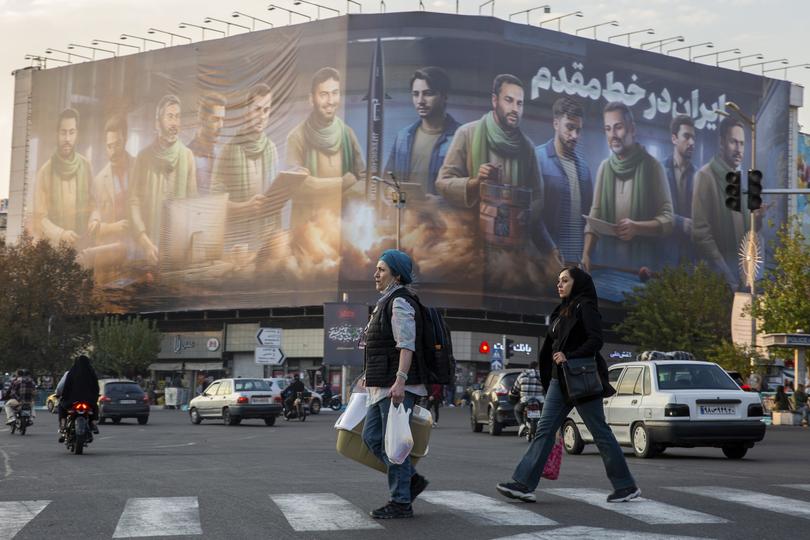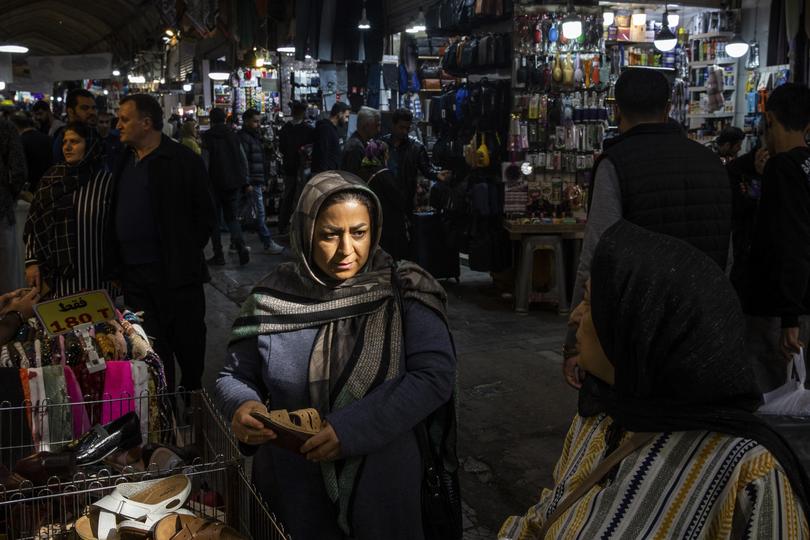THE NEW YORK TIMES: After a ceasefire in Lebanon, Gaza and Iran’s nuclear ambitions await Donald Trump

Difficult as it was to achieve, the ceasefire in Lebanon was the easy part.
After helping to strike the deal this week, President Joe Biden insisted that “peace is possible,” reflecting hopes that the ceasefire between Israel and Hezbollah in Lebanon could be a first step toward ending conflicts across the broader Middle East.
But the obstacles to peace beyond Lebanon are formidable, and any regional realignment is likely to fall to Biden’s successor, Donald Trump.
Sign up to The Nightly's newsletters.
Get the first look at the digital newspaper, curated daily stories and breaking headlines delivered to your inbox.
By continuing you agree to our Terms and Privacy Policy.Both Israel and Iran, the regional power that backs Hezbollah, wanted an end to the fighting in Lebanon, each for its own reasons. All but decimated, Hezbollah had little alternative.
But that does not mean peace is close in the Gaza Strip. Israel and Hamas remain far apart on a ceasefire of their own. Key regional powers like Saudi Arabia still insist on a Palestinian state, a prospect that looks ever more distant. And, not least, looming over any diplomatic effort is the prospect of a nuclear-armed Iran.
In his address to Israelis explaining why he had agreed to the Lebanon ceasefire, Prime Minister Benjamin Netanyahu was unequivocal: “The first reason is to focus on the Iranian threat.”

Iran will be Trump’s first order of business in the region. That is not only because it is the linchpin of the threats facing Israel, but also because it continues to enrich uranium that can quickly be turned into weapons, and time is running out to reach a new deal to curb its production.
There are factors that work in Trump’s favour, however. Iran, which blessed the ceasefire between Israel and Hezbollah, is trying to show the incoming Trump administration that it is again open to a negotiated deal over its nuclear program, diplomats and analysts say.
With its allies Hezbollah and Hamas badly damaged and its own air defenses shown to be vulnerable, Iran wants to avoid a direct military confrontation with Israel and obtain economic relief from punishing sanctions over its nuclear program, they say.
So Iran has been eager to display a renewed willingness to bargain over its rapidly expanding nuclear enrichment, which is within weeks of being weapons-grade, before Trump enters office.
The Iranians, along with everyone else in the Middle East, are trying to appeal to Trump’s “deal-making ambitions,” said Sanam Vakil, Middle East director for Chatham House. They are showcasing their compliance in Lebanon and have reengaged with the Europeans, dangling the potential for a new nuclear deal, she said.
“But getting from here to the table and to a deal is a very difficult process, and the clock is ticking,” she said.
In his first term, Trump pulled out of the 2015 nuclear deal with Iran, insisting it wasn’t tough enough. He established a “maximum pressure” policy, reimposing severe American economic sanctions on Iran and adding more. Iran, its economy in ruinous shape, would like to avoid “maximum pressure 2.0,” said Ali Vaez, director of the Iran Project at the International Crisis Group.
Iran and the European countries that helped negotiate the 2015 deal and failed to preserve it — Britain, France and Germany — are trying to explore the possibility of a new deal, coupled with discussions about how to de-escalate tensions in the larger Middle East, where Iran has sought to expand its Islamic revolution.
The hope is to convince Trump to refrain from implementing a new set of harsh economic sanctions as soon as he returns to the presidency in January.
“Trump may be ready for ‘maximum pressure 2.0,’ but Iran can no longer support ‘maximum resistance 2.0,’” Vaez said. “They want to avoid another costly showdown with Trump and explore a deal,” he said, thinking that Trump can deliver the U.S. Congress to support one, as previous Democratic presidents could not.
To that end, Iran’s deputy foreign minister will meet European officials in Geneva on Friday, to build on an earlier meeting at the U.N. General Assembly in September.

Those same European countries sponsored a resolution last week censuring Iran for not being transparent with the U.N.’s nuclear watchdog, perhaps to display to Trump that they, too, are willing to be tougher on Iran.
Iran regularly insists that its nuclear program is for purely civilian purposes, but it is enriching uranium to a level that has no civilian use but that is close to military-grade. European officials have low expectations for the meeting Friday but see it as a way to prepare for Trump’s presidency and to influence his policy on Iran.
The Europeans do not want to be sidelined by any direct U.S.-Iran deal. Since Trump left the presidency, Iran’s open cooperation with China and especially with Russia has troubled Europeans, whose security is threatened by Russia’s aggression in Ukraine and Trump’s ambivalence about the NATO alliance.
“I have no expectation the meeting will produce concrete results, but it’s an opportunity for the Europeans and Iran to explore the outlines of a deal, what Iran is willing to put on the table,” said Kelsey Davenport, director for nonproliferation policy at the Arms Control Association. Once Trump takes office, the time for a new deal will be short, only some six months, she said.
That is because the 2015 deal that suspended international sanctions against Iran expires next October. If there is no new deal before then, the Europeans are expected to move in the United Nations to restore them, in what are known as snapback sanctions.
“Multilateral maximum pressure,” with U.N. sanctions on top of American ones, “is what Iran really wants to avoid,” Davenport said. The Iranians “have been very smart to signal early and clearly their willingness to negotiate with Trump.”
There are already tensions between those around Trump favoring maximum pressure and his own stated preference for a deal, she said. “That’s another reason for the Europeans to push Trump to move quickly.”
But in the effort for a broader Middle East peace, an Iran nuclear deal is just one, very difficult piece of an intricate puzzle, especially if Trump pushes to revive a Saudi-Israel normalization that seemed in the cards before the Israel-Hamas war in Gaza.
After the deaths of tens of thousands of Palestinians, that deal seems further away than ever, with the Saudis and the leaders of Persian Gulf states pressing for concrete progress toward a Palestinian state, and relations warming with their traditional enemy, Iran.
Unlike during Trump’s first term, Saudi Arabia and Gulf leaders have been less eager to confront Iran than to manage it, moving toward a clear-eyed rapprochement.
“The Saudis have no illusions about Iran,” which could still be disruptive in the region even without Hezbollah, said Suzanne Maloney, an Iran expert and director of the foreign policy program at the Brookings Institution. “A weaker Iran is not necessarily a less dangerous Iran,” she said.

If there is no nuclear deal and American maximum pressure is enhanced by the snapback sanctions, Iran, weakened by its confrontation with Israel, might then choose to go ahead and develop its own nuclear deterrent, analysts said.
Such a move would be in violation of Iran’s commitments under the Nuclear Nonproliferation Treaty and be a challenge for Israel and the United States, which have vowed to prevent Iran from ever getting the bomb.
Israel, too, is making its own calculations with a new sense of confidence and trying to ascertain what a President Trump might be willing to do or allow “to continue to degrade and weaken Iran,” said Hugh Lovatt of the European Council on Foreign Relations.
“It’s dealt with two of Iran’s tentacles from its point of view, and they now see Iran as vulnerable and open to attack,” he said.
Washington risks overconfidence that “Iran is back in the box” after the damage done by Israeli strikes to Hezbollah, Hamas and its own missile and nuclear facilities, Maloney said.
Even if weakened, she said, “Iran can very much still play the spoiler.”
This article originally appeared in The New York Times.
© 2024 The New York Times Company
Originally published on The New York Times
